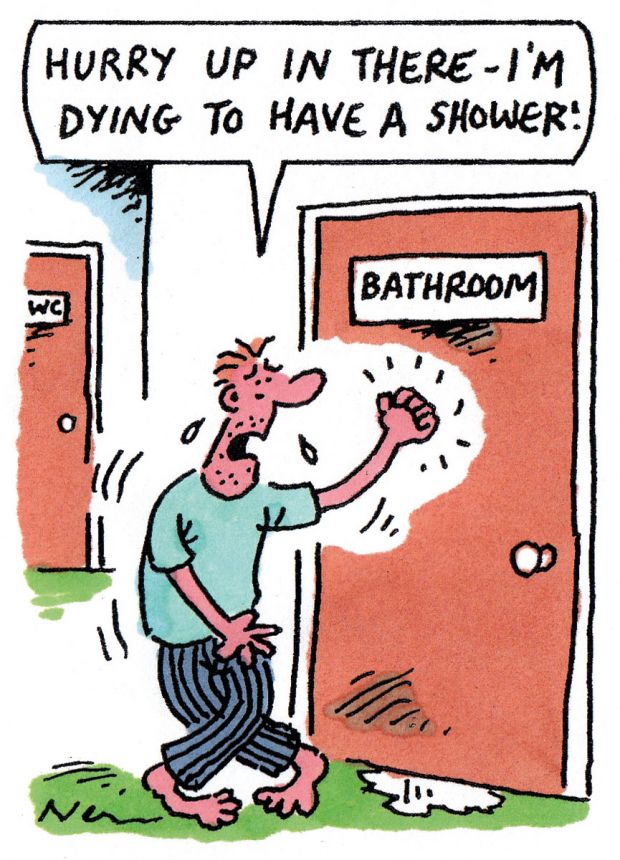
- Three Japanese-born scientists shared the Nobel Prize in Physics for inventing the blue light-emitting diode (LED), but not everyone was so keen to congratulate the trio. The inventor of the original red LED, Nick Holonyak, a retired engineering professor from the University of Illinois, said it was “insulting” that he had once again been overlooked for his work, reported The Independent on 8 October. Speaking from his care home in Urbana, Illinois, the 85-year-old said that the blue LED would never have been created without the work he and his colleagues carried out at General Electric in the 1960s. “The LED as you know it today comes from us,” said Professor Holonyak. “Hell, I’m an old guy now, but I find this one insulting,” he added.
- Two University of East Anglia students generated acres of news coverage with a simple, if controversial, request: please urinate in the shower. Chris Dobson and Debs Torr estimated that UEA could save enough water to fill 26 Olympic-sized swimming pools every year if their 15,000 students took their first wee of the day while showering rather than by flushing a loo. That would save the university about £125,000 in water bills every year or £42.5 million if the whole of East Anglia did so, BBC News online reported on 9 October. Urine does not pose a health risk, even in communal showers, said Mr Dobson, launching the “Go with the Flow” challenge. However, he advised students to see how their fellow students feel about the “challenge” before embracing it too enthusiastically.
- A student society has been disbanded for distributing leaflets in which women were described as “mingers”, “trollops” and “slags”, The Guardian reported on 10 October. The London School of Economics men’s rugby club has been suspended for the entire academic year after it “brought shame” on the university, said its student union. The freshers’ fair leaflets, which also claimed that women playing sports were “beast-like”, were not the club’s first offence either, said the university’s union secretary Nona Buckley-Irvine. Members had “blacked-up” and dressed as Guantanamo Bay prisoners, taken part in Nazi-themed drinking games and vandalised LSE property in recent years, she said. But the LSE wasn’t the only university in the headlines for bad behaviour in freshers’ week. Students from the University of Nottingham’s Cavendish halls of residence challenged the LSE rugby club in the offensiveness stakes after student reps were caught on video leading a chant about necrophilia, The Guardian reported on 8 October.
- A university professor has received an unusual retirement gift – an embalming tank named in his honour. The macabre honour bestowed on Roger Soames, who is stepping down as Cox chair of anatomy at the University of Dundee, puts him in good company. Several crime writers, including Lee Child, Jeffery Deaver and Harlan Coben, who helped fundraise for the university’s mortuary, also have tanks named in their honour. The mortuary itself was earlier this year named after Scotland’s queen of grisly crime fiction, Wire in the Blood creator Val McDermid.
- A mathematics professor has used trigonometry to settle a two-year legal battle over a hot air balloon that started a pig stampede, the Yorkshire Post reported on 14 October. Chris Fewster, a member of the University of York’s mathematics department, was asked to plot the likely flight path of a balloon that had spooked a herd of pigs, resulting in the death of three sows, a boar and a number of unborn piglets, the paper said. Professor Fewster used an equation and a photo taken by a neighbouring farmer’s wife to calculate that the balloon had passed within 300m of the pigs at a height of 50m. That distance from the farm breached the Civil Aviation Authority’s rules, which state that balloons should not pass within 500m of livestock, causing the balloon company’s insurers to up their initial offer of £10,000 in compensation to nearly £39,000. Professor Fewster, whose research centres on quantum theory in flat and curved space times, said that the mathematics used was “fairly elementary”, but added that the case showed how “relatively simple mathematics like trigonometry could make an important contribution” to real-life problems.
Register to continue
Why register?
- Registration is free and only takes a moment
- Once registered, you can read 3 articles a month
- Sign up for our newsletter
Subscribe
Or subscribe for unlimited access to:
- Unlimited access to news, views, insights & reviews
- Digital editions
- Digital access to THE’s university and college rankings analysis
Already registered or a current subscriber? Login
